Book Appointment Now

Fundamental Web Technologies
Web technology refers to the various tools and techniques used for communication between different types of devices over the Internet. A web browser in it’s basic form can be defined as a program that displays text, data, images, animations, and videos on the Internet.
Today, we’re diving into the fundamental building blocks of the web – the trio of technologies that form the backbone of every website and web application: HTML, CSS, and JavaScript. These three languages work together to create the vibrant, interactive, and engaging web experiences we enjoy today. So, let’s unravel the magic behind them!.
The Dynamic Trio: HTML, CSS, and JavaScript
Imagine you’re putting together a theater production. You have the script (the words the actors say), the set design (how the stage looks), and the lighting and sound effects. Now, think of a website in the same way. The content and structure are like the script, the visual design is the set, and the interactivity is created through lighting and sound effects.
- HTML (Hypertext Markup Language): This is the foundation of any web page. It’s like the script of our theater production. HTML is used to define the structure and content of a web page, outlining the headings, paragraphs, images, and links. Think of it as the bones of the website, giving it shape and meaning. For example, when you visit a news website, the headlines, articles, and sidebars are all defined using HTML.
- CSS (Cascading Style Sheets): This is the language that adds style and flair to the HTML content. It’s like the set design and costumes of our play. CSS allows developers to specify how the HTML elements should look, including colors, fonts, sizes, and layouts. With CSS, you can make a heading bold and blue, create a stylish navigation menu, or make an image gallery with sleek transitions. It brings the web page to life and makes it visually appealing.
- JavaScript: Now, enter JavaScript – the star that makes everything interactive. It’s like the lighting and sound effects that engage the audience. JavaScript brings movement and responsiveness to a website. With JavaScript, you can create dynamic elements, such as dropdown menus, sliding image carousels, or interactive maps. It also powers more complex functionalities, like real-time chat applications or dynamic form validation. JavaScript is the key to making websites responsive and engaging, enhancing the user experience.
Diving into the World of HTML
Let’s explore HTML a little more. When you visit a website, your web browser receives the HTML code, which is a set of tags that describe the content. For example, the tag <h1> indicates a top-level heading, while <p> defines a paragraph. Here’s a simple example:
<html>
<head>
<title>My First Web Page</title>
</head>
<body>
<h1>Welcome to My Website!</h1>
<p>This is my first paragraph.</p>
<img src="my-photo.jpg" alt="My Photo">
</body>
</html>In this code, we have the basic structure of an HTML document. It starts with the <html> tag, which wraps the entire content. Inside, we have <head> for metadata (like the title of the page) and <body> for the visible content. The <h1> tag defines a heading, <p> creates a paragraph, and <img> displays an image. Easy, right?
Styling It Up with CSS
Now, let’s add some style to our web page using CSS. CSS allows you to select HTML elements and apply styles to them. You can specify colors, fonts, sizes, and even create animations. Here’s a simple example of a CSS rule:
h1 {
color: blue;
font-size: 24px;
}This rule targets all <h1> headings and makes them blue with a font size of 24 pixels. You can also apply styles based on element types, classes, or IDs, giving you precise control over the appearance of your web page.
Bringing It to Life with JavaScript
JavaScript is the dynamo that adds interactivity. It allows you to respond to user actions, manipulate the HTML and CSS, and perform calculations. Here’s a basic example of a JavaScript function that says hello when a button is clicked:
sayHello() {
alert("Hello, world!");
}You can attach this function to a button click event, so when the user clicks the button, they get a friendly greeting.
The Magic They Create Together
HTML, CSS, and JavaScript work hand in hand to create the vibrant web experiences we know today. HTML provides the structure, CSS adds the visual appeal, and JavaScript brings everything to life. Here’s an example to illustrate this:
Imagine you’re building a simple online quiz. HTML defines the structure, creating sections for questions, answers, and a submit button. CSS then styles it, making the questions bold and colorful, and adding a stylish background. Finally, JavaScript adds interactivity, showing the next question when an answer is selected and providing a score at the end.
The Ever-Evolving Web
The web is a constantly evolving space, and these basic web technologies have also grown and adapted over the years. New features and improvements are regularly introduced, ensuring that developers can create more sophisticated and engaging experiences. For example, HTML5 brought us new semantic tags like <nav> and <article>, making it easier to define the purpose of different parts of a web page. CSS3 expanded the styling capabilities, offering animations, transformations, and flexible box layouts. And with constant updates to JavaScript, developers can now build complex web applications that rival native desktop software in functionality.
Final Thoughts: Embracing the Web’s Fundamentals
HTML, CSS, and JavaScript are the foundations upon which the modern web is built. They are the tools that empower developers to create everything from simple static websites to complex web applications. Understanding these basic web technologies is the first step towards becoming a skilled backend developer, as they form the basis for more advanced concepts and frameworks. So, continue exploring, creating, and having fun with these dynamic trios of the building blocks of the web!
Stay tuned for our next adventure as we delve into the exciting world of server-side programming languages and uncover the engines that power dynamic web applications!




